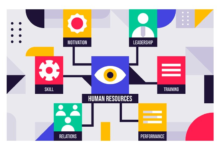
The Latest Email Hacks That Are Everywhere in 2022
Did you know that there are over 600,000 new businesses across the United States each year? However, many of these companies fail within the first few years. As you might guess, part of running a successful business involves investing in the right strategies.
Data security is one of the most crucial, especially when it comes to preventing malicious hackers from accessing your email.
Email hacks are something that all entrepreneurs need to know about, but not everyone knows where to start. We’ve created a brief guide that outlines the key factors to consider. Let’s dive into all you need to know about types of email hacks.
Table of Contents
Phishing
This is a form of cyberattack in which attackers try to trick users into giving them sensitive information, such as login credentials or financial information. Phishing attacks often take the form of an email or website that looks legitimate but is actually fake. In recent years, phishing attacks have become more sophisticated and difficult to spot.
Attackers may use personal information gleaned from social media to make their emails or websites look more legitimate. They may also use malware to infect a victim’s computer and then send fake emails from that account. If you receive an email or see a website that looks suspicious, do not click on any links or enter any sensitive information.
If you’re not sure whether an email or website is legitimate, you can contact the company directly to confirm.
You can check out this page to learn more about phishing training.
Email Hacking
Email hacking is a type of cyberattack in which attackers gain access to a victim’s email account and then use it to send spam or phishing emails, or to mount other attacks.
Email hacking can be difficult to detect because the attacker may only make small changes to the account, such as changing the signature or sending emails to new contacts. If you think your email account has been hacked, change your password immediately and contact your email provider for help.
Malware
Malware is a type of malicious software that can infect a computer and cause damage or disruption.
Malware can be used to steal personal information, mount attacks on other computers, or even take control of a victim’s computer. Malware can be disguised as a legitimate email attachment or website download, so it’s important to be cautious when opening emails or downloading files from the internet.
If you think your computer may be infected with malware, run a scan with antivirus software and then contact a professional for help.
Ransomware
Ransomware is a type of malware that encrypts a victim’s files and then demands a ransom to decrypt them. Ransomware attacks are often carried out through phishing emails or fake websites.
If you are infected with ransomware, do not pay the ransom. There is no guarantee that you will get your files back, and you may be exposing yourself to further attacks. Instead, try to restore your files from a backup if you have one.
If you don’t have a backup, you may be able to use a ransomware removal tool.
SQL Injection
SQL injection is a type of cyberattack in which attackers insert malicious code into a victim’s database.
This allows the attacker to gain access to sensitive data, such as passwords or credit card numbers.SQL injection attacks are often carried out through malicious websites or email attachments. To protect yourself from SQL injection, make sure you have a firewall and antivirus software installed, and be cautious when clicking on links or downloading files from the internet.
How Can I Protect Myself From Email Hacks?
There are a few steps you can take to protect yourself from email hacking.
As you might guess, email security starts with a strong password. Use a mix of upper and lowercase letters, numbers, and symbols to create a password that would be difficult for someone to guess.
You should also enable two-factor authentication for your email account. This adds an extra layer of security by requiring you to enter a code from your phone in addition to your password when logging in.
Finally, be cautious when opening emails or clicking on links. If an email looks suspicious, don’t open it. If you’re not sure whether a website is legitimate, don’t enter any sensitive information.
What Should I Do If My Email Is Hacked?
If you think your email account has been hacked, change your password immediately. You should also enable two-factor authentication if it’s an option for your account. If you’re still having trouble, contact your email provider for help.
They may be able to restore your account or help you set up a new one.
How Can I Protect Myself From Malware?
Install a reputable antivirus program on your computer and keep it up to date. You should also be cautious when clicking on links or downloading files from the internet. If you’re not sure whether a website is legitimate, don’t enter any sensitive information.
If an email looks suspicious, don’t open it. Make sure you have a firewall installed and turned on. This will help to block malicious traffic from reaching your computer.
Email Hacks Don’t Have to Be Complicated
It might seem difficult to handle email hacks, but it’s easier than you might expect it to be. Ensure that you keep the above guidelines in mind so you can avoid problems you may have encountered.
Looking for other useful articles like this one? Our blog has plenty of info that can help you out in the future.








